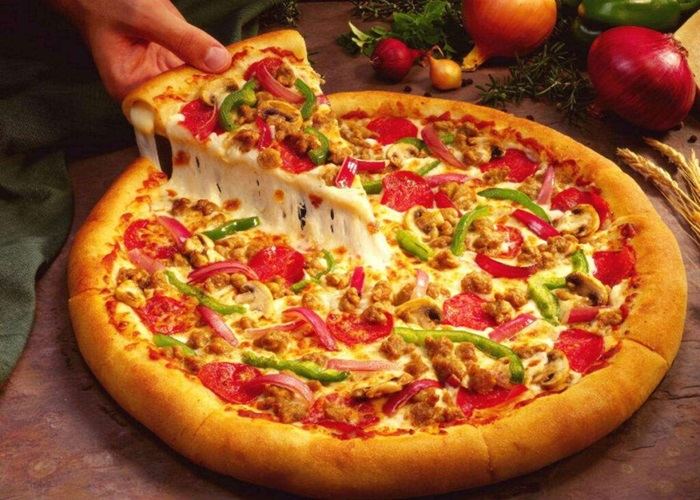Food is a universal language that transcends borders, bringing people together through shared flavors and traditions. Among the myriad of dishes enjoyed globally, one stands out as particularly beloved by people from all walks of life. This article delves into what many consider the most popular food in the world, exploring its preparation, cultural significance, and enduring appeal.
The Contender for World’s Favorite Dish
The Contender for World’s Favorite Dish: Pizza, originating from Italy, has become a global phenomenon cherished by millions. Its versatility allows it to adapt to various tastes and ingredients, making it a favorite across cultures. From simple margherita to gourmet varieties, pizza offers something for everyone. It’s not just a meal but an experience that brings families and friends together, embodying the spirit of sharing and enjoyment.
History and Cultural Significance
History and Cultural Significance: Pizza’s roots can be traced back to ancient civilizations, where flatbreads with toppings were common. However, modern pizza as we know it emerged in Naples, Italy, during the 18th century. Initially considered peasant food, it gained popularity among the working class due to its affordability and convenience. Today, pizza is celebrated worldwide, symbolizing Italian culinary heritage while adapting to local preferences. It represents a fusion of tradition and innovation, connecting past and present.
Ingredients for Classic Margherita Pizza
Ingredients for Classic Margherita Pizza: To prepare a classic Margherita pizza, you will need:
- 500 grams flour
- 300 ml warm water
- 7 grams dry yeast
- 10 grams salt
- 2 tablespoons olive oil
- 400 grams San Marzano tomatoes
- 200 grams fresh mozzarella cheese
- Fresh basil leaves
- Salt and pepper to taste
- Extra virgin olive oil for drizzling
Each ingredient plays a crucial role in creating the perfect balance of flavors within each slice. Proper preparation ensures that every bite is delicious and satisfying.
Making the Dough
Making the Dough: Begin by preparing the dough. In a large bowl, combine the flour, yeast, salt, and olive oil. Gradually add the warm water while stirring until a dough forms. Knead the dough on a floured surface for about 10 minutes until smooth and elastic. Cover the dough with a damp cloth and let it rise in a warm place for about 2 hours or until doubled in size. This step is essential as it develops the gluten structure, resulting in a lighter and more airy crust.
Preparing the Sauce and Toppings
Preparing the Sauce and Toppings: While the dough rises, prepare the tomato sauce. Crush the San Marzano tomatoes and season with salt and pepper. Simmer the mixture over low heat for about 20 minutes until thickened. Slice the fresh mozzarella cheese into rounds and prepare the basil leaves. These simple yet flavorful ingredients form the heart of a traditional Margherita pizza, providing a delightful contrast between the tangy sauce and creamy cheese.
Assembling and Baking the Pizza
Assembling and Baking the Pizza Process: Once the dough has risen, divide it into small pieces and roll each piece into a thin circle. Place the rolled dough on a pizza stone or baking sheet dusted with cornmeal. Spread the tomato sauce evenly over the dough, leaving a border for the crust. Arrange the sliced mozzarella cheese on top and garnish with fresh basil leaves. Drizzle with extra virgin olive oil. Bake the pizza in a preheated oven at 475°F (245°C) for about 10-12 minutes until the crust is golden and the cheese is bubbly. Cooling allows the flavors to meld together, ensuring a moist and flavorful slice.
Variations Around the World
Variations Around the World: Pizza’s popularity has led to countless variations around the globe. In the United States, deep-dish pizzas with thick crusts are favored, especially in Chicago. In Japan, seafood toppings like eel and mayonnaise are popular choices. Indian pizzas incorporate spices and ingredients such as paneer and tandoori chicken. Each adaptation reflects local tastes and ingredients, showcasing the dish’s adaptability and universal appeal.
Cultural Impact and Social Gatherings
Cultural Impact and Social Gatherings: Beyond being a meal, pizza often serves as a social catalyst, bringing people together for gatherings and celebrations. Pizza parties are common events, fostering connections and community spirit. The act of sharing a pizza, whether at home or in a restaurant, emphasizes unity and camaraderie. It’s a moment of togetherness and celebration, reinforcing the importance of family and tradition. Whether enjoyed during special occasions or any other time, pizza brings people together, fostering connections and preserving cultural identity.
Conclusion
In conclusion, pizza stands out as one of the most popular foods in the world, celebrated for its versatility, flavor, and cultural significance. From its humble beginnings in Naples to its global dominance today, pizza continues to evolve while staying true to its roots. By preparing and enjoying this beloved dish, we participate in a tradition that honors the past while embracing the present. Embracing pizza allows us to connect with diverse cultures and share moments of joy and unity. Through the preparation and enjoyment of pizza, we celebrate the richness of global cuisine, ensuring that this delightful culinary tradition continues to thrive in our lives. Whether enjoyed as part of a casual meal or a festive gathering, pizza remains a timeless favorite that brings people together, fostering connections and preserving cultural identity.
Related topics:


